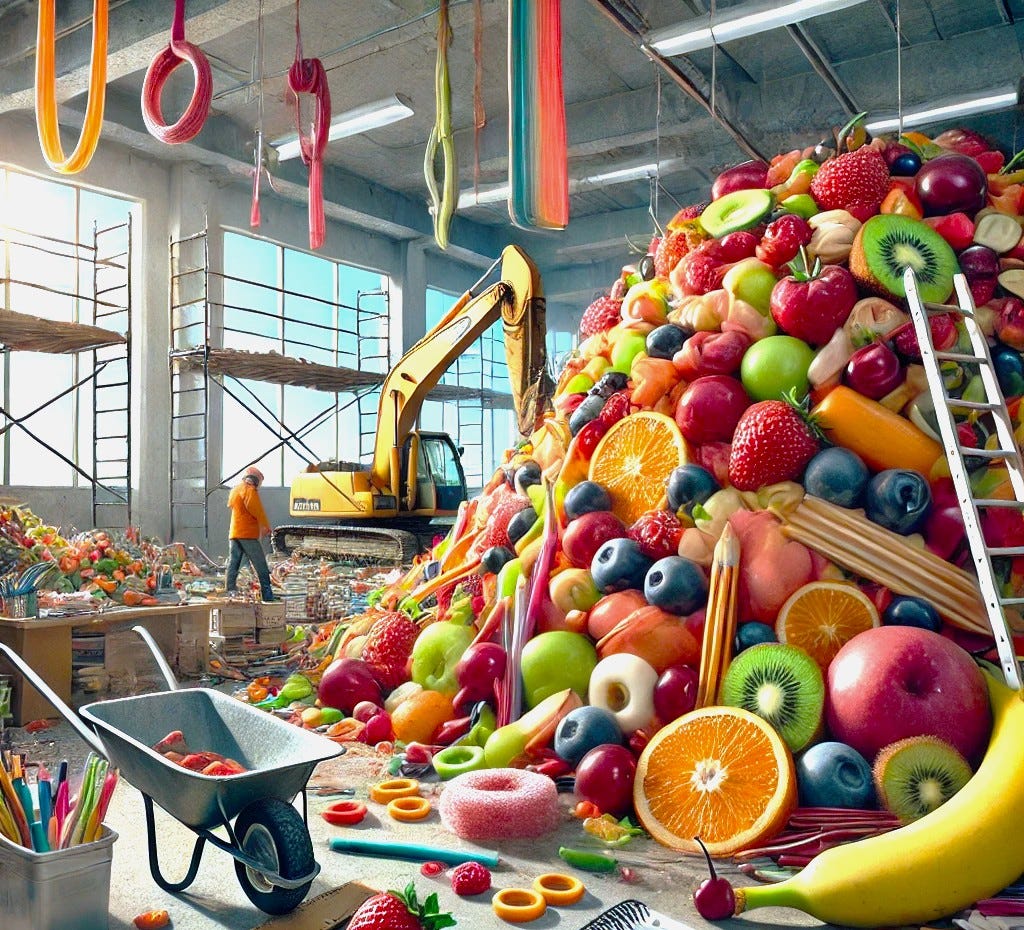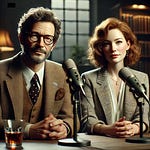In the world-wide world of the wine world, there’s a fine line between thoughtful tasting and theatrical performance.
Too often, we see tasters cast their nets too wide, “fishing” for every aroma and flavor imaginable in a single glass. The team at the Indelible Wine Stain is here to make a call. To ask that we ground ourselves in the simple, authentic joy of wine tasting, guided by common sense, genuine mind-reactions and a good old fashioned, honest-to-Betsy, palate-to-mind connection.
What Wine Tasting Is Really About
At its core, wine tasting is a sensory experience. It is a dialogue between your palate and your mind, so we might argue that the palate is also in the mind…
Each sip should evoke flavors and aromas that wake-up memories locked away in your personal flavor database or as we say - “Flavabase.”
A sip of a “Chidaine Montlouis” might remind you of the red apples that you were scrumping like a scamp from the Village orchard, while a Pinot Noir might evoke the earthy aroma of a damp forest floor during a truffle hunt.
Run, truffles, Run.
Wine tasting is deeply personal - an exploration of how the flavors in the glass react with your unique memory bank. It’s not about reciting a list of descriptors that you have memorized or about thinking that we need to impress others to or be the best in the room. It’s about genuine, honest reactions to what you taste and then choosing to communicate those to others that might like to hear your thoughts on the experience.
Avoiding the Art of Fishing
And yet, many tasters fall into the trap of fishing - the habit of naming every possible aroma or flavor, hoping one will stick like a soggy slice of bread that is splat-thrown against a greasy wall.
Fishing often starts with good intentions but quickly spirals into absurdity. It might sound something like this:
“I’m getting blueberry. No, wait, blackberry. Actually, raspberry. Definitely some cranberry. Oh, and leather. And earth! Maybe pencil shavings? Vanilla, too. Definitely vanilla. Wet stone? Yes, wet stone and flint and chalk.”
By the time you’re done, the wine has morphed into a bizarre mash-up of a fruit salad, a stationery shop and a delayed construction site.
In fact, chalk has a neutral taste and “chalky” notes in wine are not a direct result of soil flavors but rather a combination of acidity, texture, winemaking and psychology. The use of descriptors like “limestone” or “chalk dust” are just a poetic way to communicate a wine's structural and sensory characteristics, especially its acidity-driven brightness or textural dryness.
Why People Fish
Sometimes we feel that we should be able to identify dozens of flavors, so we start throwing out guesses to fit in. While humans can detect thousands of aroma compounds, research shows that identifying specific ones is challenging. In fact, humans are generally good at identifying individual flavors but struggle when multiple flavors are combined. Studies indicate that most people can accurately identify only 2-4 components in a mixture.
Identifying flavors relies heavily on memory. Experienced wine tasters, chefs and perfumers have trained their brains to associate specific smells and tastes with particular terms or ingredients.
And so, instead of focusing on the dominant flavors, “fishers” overanalyze every nuance, leading to a flood of irrelevant descriptors. Once you start fishing, it’s hard to stop. It becomes a default reaction, detaching you from the actual experience of tasting the wine that is in the glass.
Why Fishing Can Send You Off Course into Rough Seas
Fishing doesn’t just make wine tasting overly complicated; it distances you from the wine itself. Instead of experiencing what’s truly in the glass, you’re stuck on an imaginary scavenger hunt, creating a tasting note that’s more fiction than fact. Worse, it can lead you to miss the actual qualities in wine in favor of invented ones.
Wine tasting should be rooted in authenticity. Instead of fishing, focus on finding one thing - the first thing that springs to find after the taste.
What does the wine actually taste and smell like?
What is your true personal reaction to those flavors?
How does the wine make you feel? What are the memories it evokes?
How to Break the Fishing Habit
If you realize that you have fallen into the “fishing trap,” don’t worry - it happens to the best of us. Here’s how to reset your approach:
Try tasting wines blind to remove biases and focus on what’s truly in the glass. Get a friend to pour a surprise! Just make sure you trust them as you may get murdered…or worse!
Simplify Your Notes by limiting yourself to three descriptors.
Practice “The Indelible Wine Stain’s Reactional Tasting Method”
Look out for that in a future article or email us for detailsLearn from other tasters as sometimes hearing other people’s straightforward impressions can ground your own. Unless they are idiots of course!
And remember, wine tasting doesn’t require a PhD in descriptive language or a “fishing net” full of descriptors.
It requires a simple combination of passion, open-mindedness, honesty and most importantly, common sense.
Approach wine with curiosity, not performance. Trust your memory.
It isn’t a competition of how many flavors and things that you can name - it’s about how it makes you feel.
So next time you pick up a glass, relax, sip and enjoy.
Leave the fishing rod at home.













